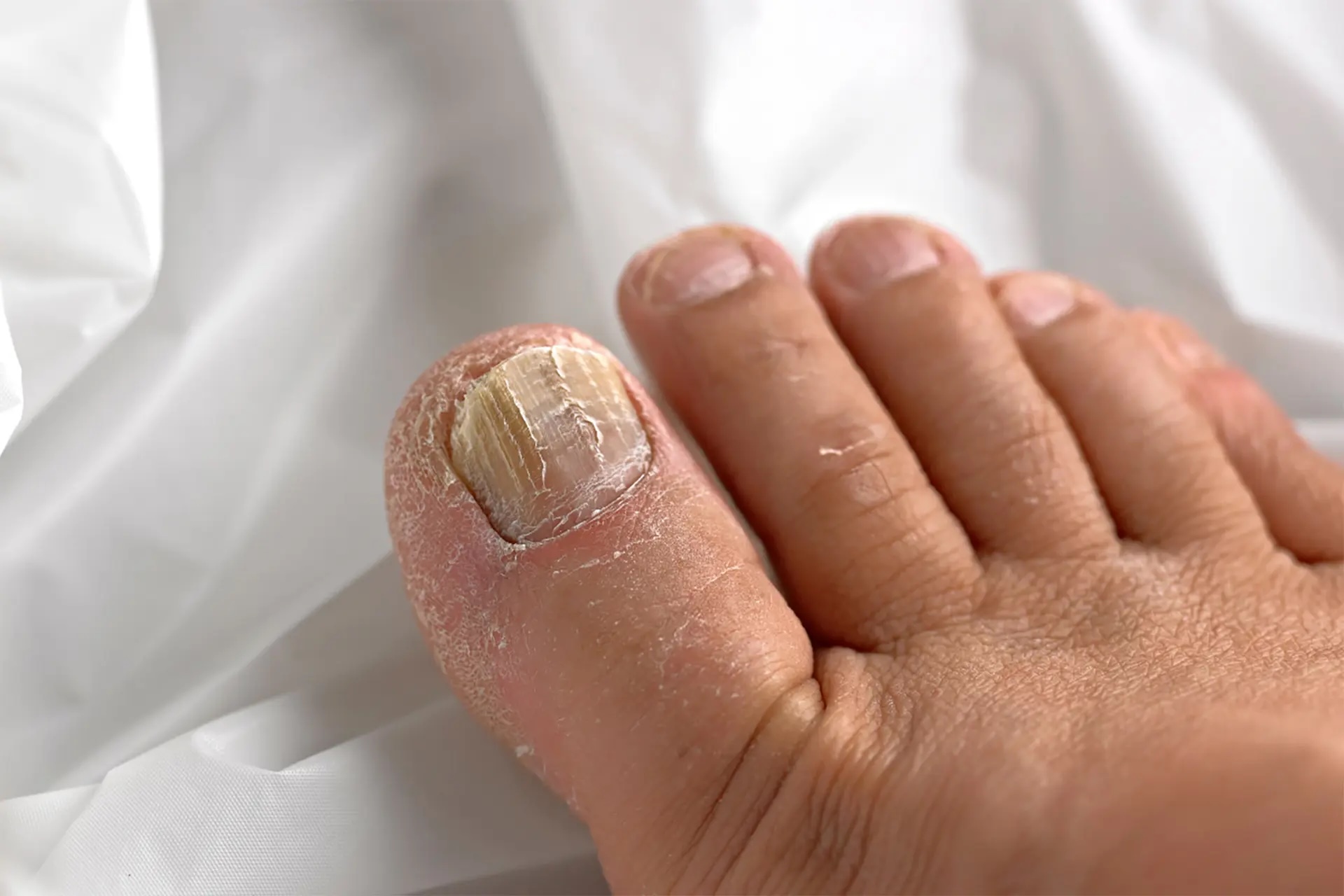What is Fungal Toenail Infection
A toenail fungal infection, or onychomycosis, is a common yet often stubborn condition that affects the nail bed, nail plate, and the surrounding tissue. What typically begins as a small white or yellow spot under the tip of the toenail can become a thickened, brittle and discoloured toenail. Though it might seem like a minor nuisance initially, the infection can become increasingly difficult to manage, if not addressed promptly.
Unlike skin infections, where symptoms often resolve quickly with topical antifungals, toenail fungal infections respond slowly. This is due primarily to the nail’s dense structure, which makes it difficult for most medications to penetrate and reach the site of infection.
Treating toenail fungus early is crucial to prevent the infection from spreading to other nails or different parts of the body. Early intervention can also help avoid more severe complications and promote quicker recovery.
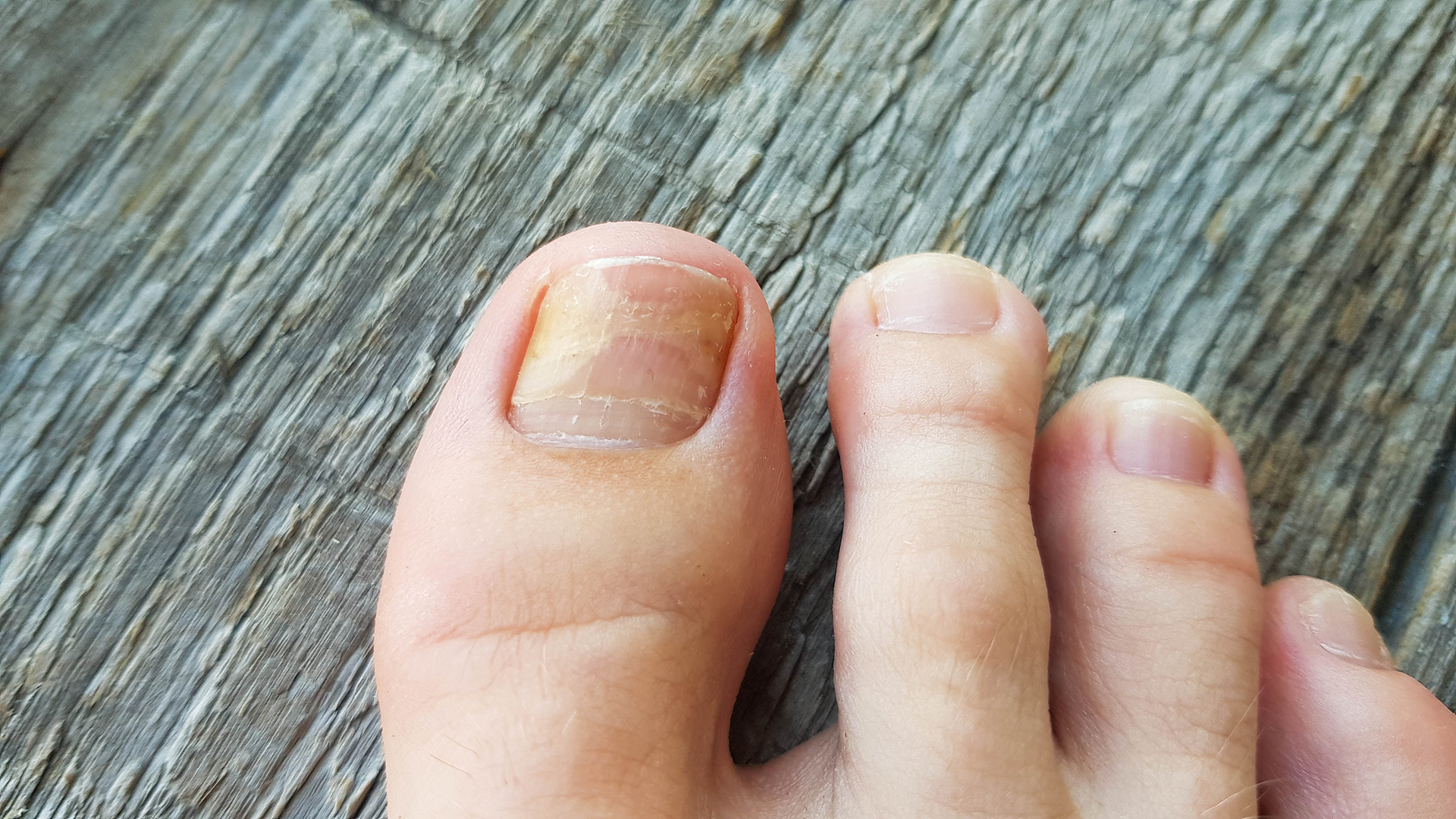
Common Signs You Shouldn’t Ignore
Recognising a toenail fungal infection early can make treatment significantly more effective. Watch for these telltale signs:
- Yellowing or whitish discolouration of the toenail
- Thickening and distortion of the shape of the toenail
- Brittleness, crumbling or ragged edges
- Darkening of the nail as debris builds up underneath
- Separation of the toenail from the nail bed
- Slight foul odour from the affected toenail
- Discomfort when wearing shoes or walking
Without intervention, the infection may spread to other toenails, the surrounding skin, and even your fingernails.
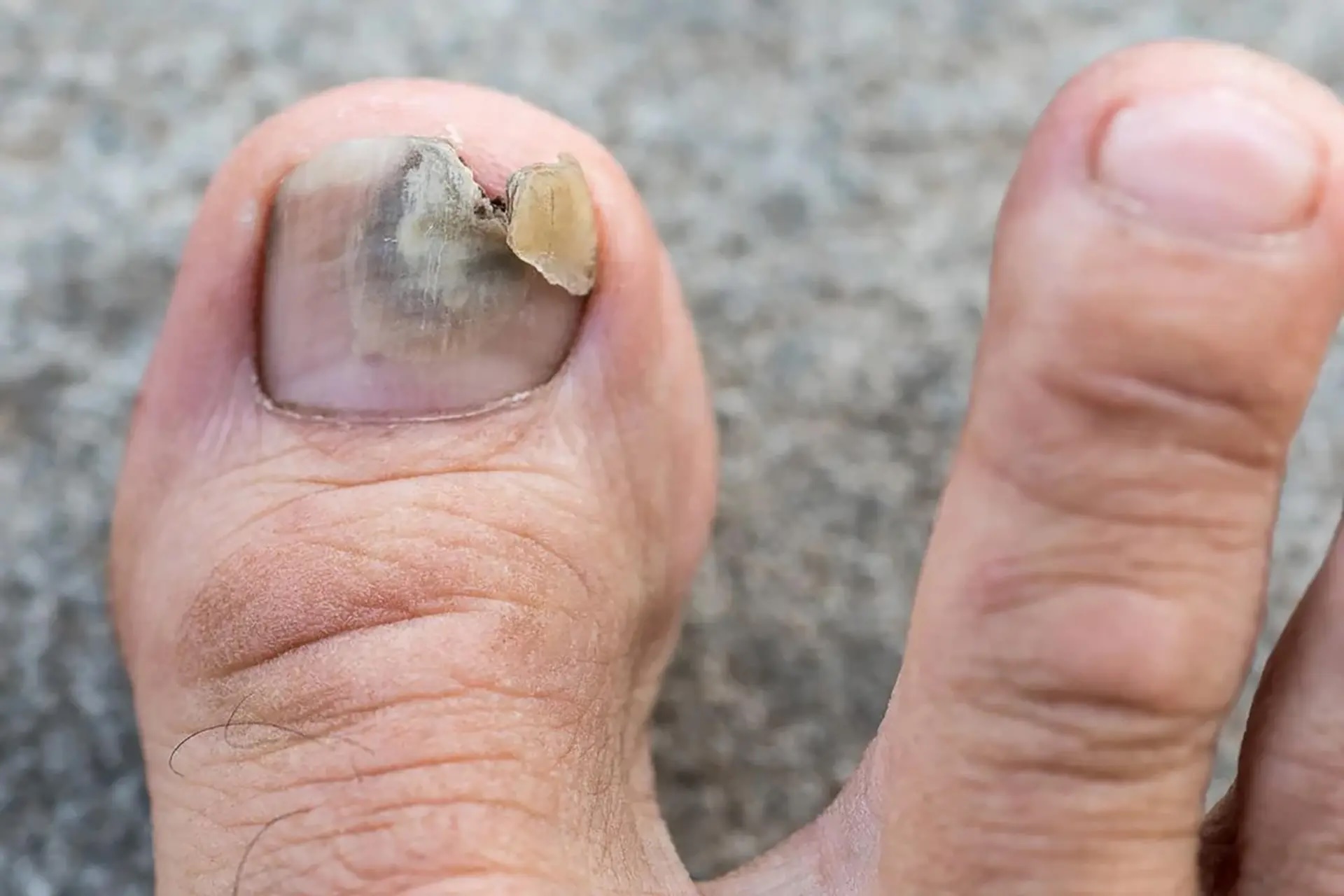
Causes and Risk Factors
Most fungal nail infections are caused by dermatophytes, yeasts or moulds that thrive in warm, moist environments—think sweaty socks, enclosed footwear and communal changing rooms. Individuals with weakened immune systems, poor blood circulation, or a history of athlete’s foot are particularly susceptible to these infections. Sharing personal care items, such as nail clippers, can also increase the risk of spreading the infection. Lastly, wearing closed shoes that trap moisture and heat, and damp socks, creates an ideal environment for fungal growth.
Ensuring good foot hygiene and avoiding these risk factors can significantly reduce the likelihood of developing a fungal toenail infection.
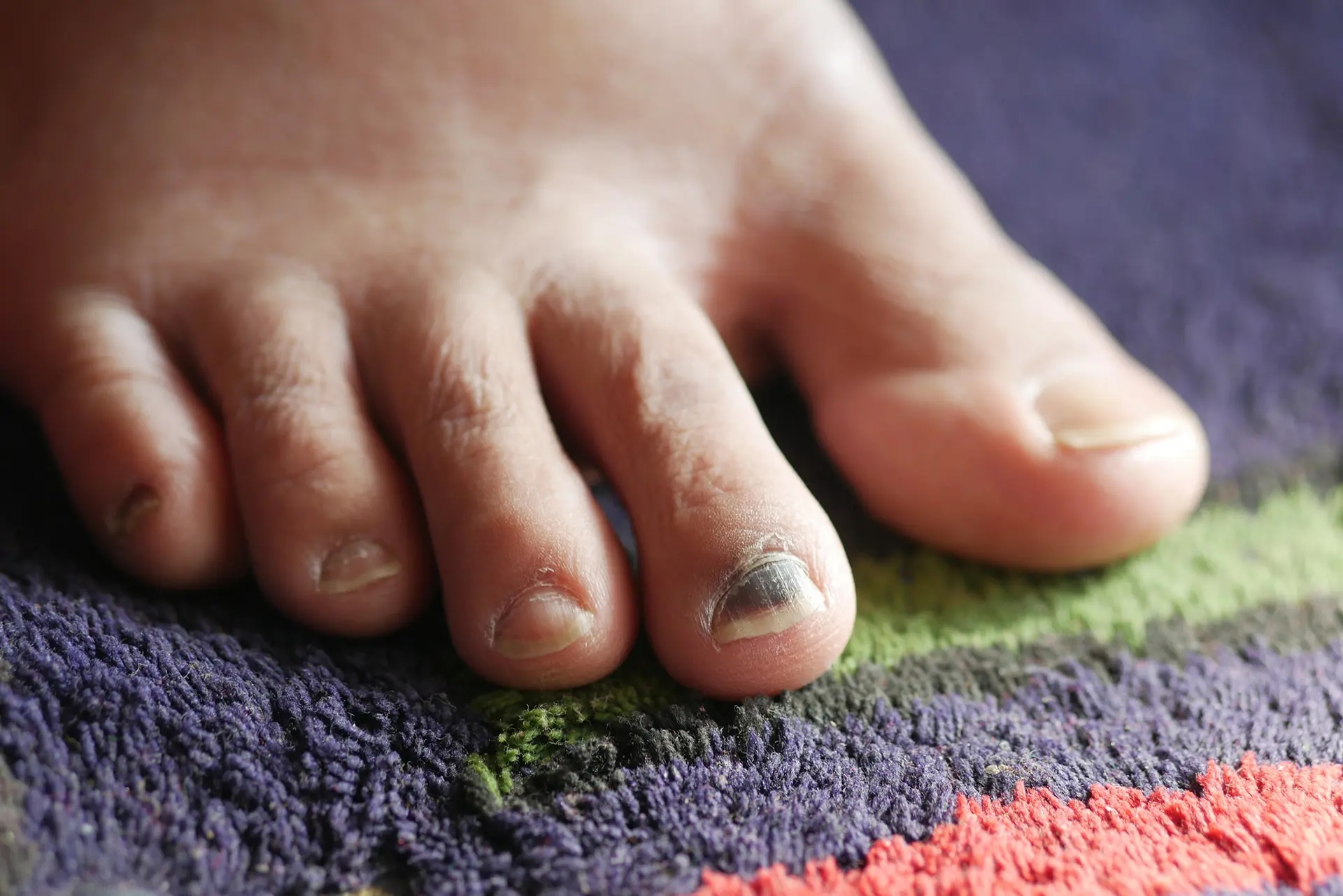
Medical Toenail Fungus Treatments
Several options exist for treating toenail fungus, such as commonly prescribed antifungal pills like itraconazole and terbinafine. Topical treatments, e.g. antifungal nail polish and medicated creams, can also be helpful for mild to moderate infections.
In more severe cases, a foot doctor might recommend nail removal, which can be performed surgically or nonsurgically. Laser treatment is another option, though its effectiveness can vary. It’s important that you’re working with a healthcare professional you trust, as they will ensure the most appropriate and effective treatment plan for each case.

Why Podiatry Makes a Difference in Treating Toenail Fungus
While over-the-counter remedies often promise quick fixes, podiatry offers a deeper and more holistic understanding of the condition. At The Foot Practice, toenail fungal infection treatment begins with a thorough clinical assessment, which includes evaluating the nail’s structure, foot hygiene habits, footwear and potential underlying causes.
The treatment approach is tailored to the individual. It often combines physical nail preparation (such as debridement or thinning of the nail plate) with topical or oral interventions, depending on the severity of the infection.
What truly sets podiatric care apart is the use of evidence-based, targeted therapies that don’t just manage symptoms but work to eliminate the root cause. The Foot Practice’s Suanfix™ spirulina-based natural treatment is one such example.

Suanfix™ Spirulina Natural Remedy
For those seeking a natural treatment for toenail fungal infection, Suanfix offers a powerful alternative to harsh chemical or systemic therapies. Suanfix harnesses spirulina, a nutrient-dense blue-green algae known for its healing and antimicrobial qualities.
The treatment works in several ways. First, it promotes the natural shedding of infected nail tissue, allowing for healthier regrowth. At the same time, spirulina’s bioactive compounds help inhibit fungal proliferation and restore the natural balance of the nail environment. Rich in chlorophyll, essential amino acids and antioxidants, Suanfix supports cellular repair, which is crucial in encouraging healthy nail formation.
What makes Suanfix particularly appealing is its gentle, plant-based composition. Unlike some traditional antifungal agents, it carries no risk of liver toxicity or systemic side effects, making it suitable for a broader range of patients than chemical therapies, which can be difficult for those with sensitivities or existing health conditions.
At The Foot Practice, our podiatrist will explain how to apply Suanfix following precise nail preparation. This enhances its penetration and ensures optimal contact with the affected area, significantly improving outcomes when self-administered.
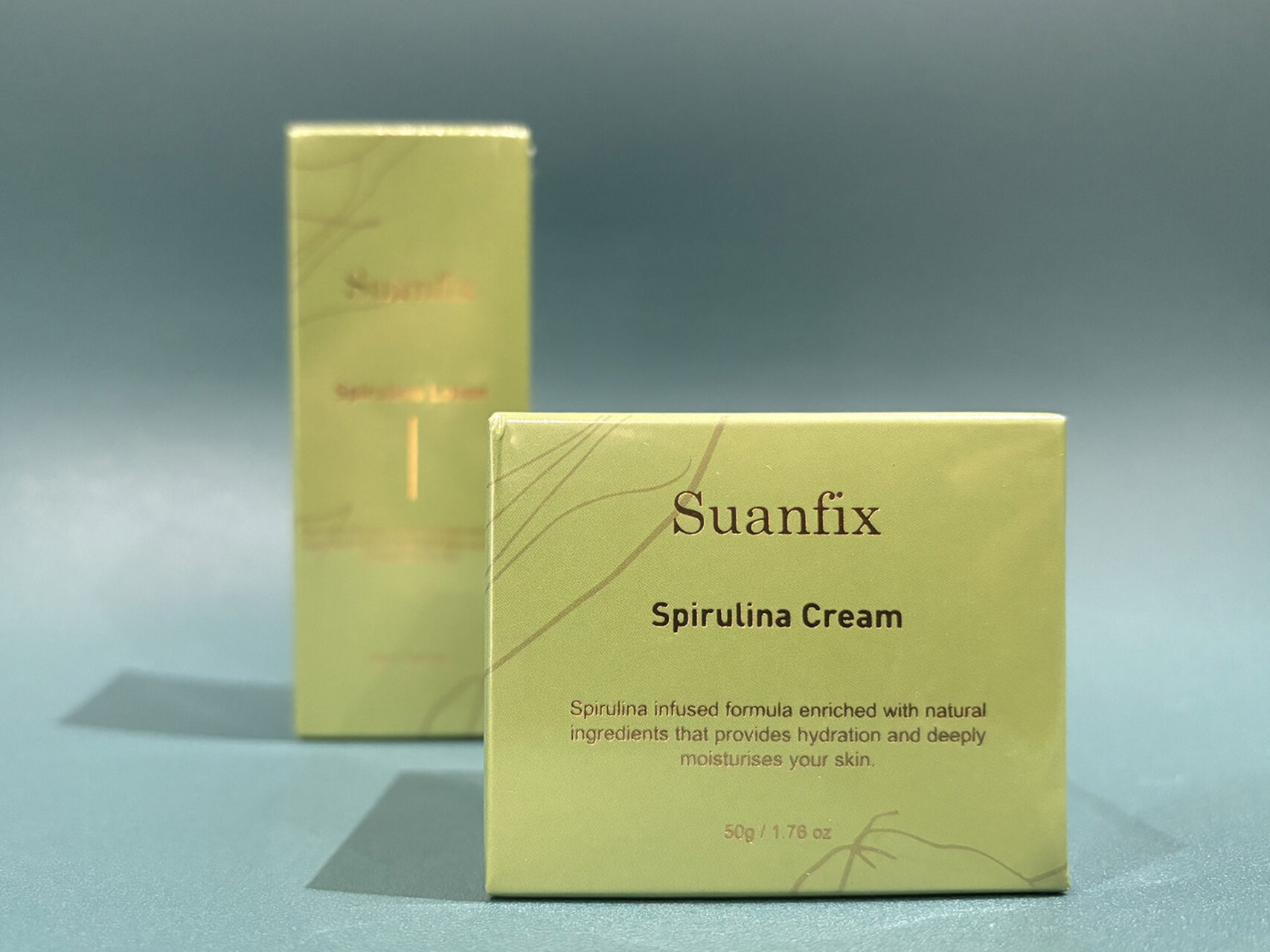
How to Get Rid of Fungal Infection in Toenails
The answer to this oft-repeated question lies in early detection and a structured, personalised care plan to treat toenail fungus for patients asking how to eliminate fungal infection in toenails. Simply covering up symptoms won’t suffice. At The Foot Practice, we advocate for:
- Clinical diagnosis and assessment by a podiatrist
- Nail preparation to allow better absorption of topical treatments
- Application of Suanfix as a primary or complementary solution
- Ongoing podiatric monitoring and hygiene support
- Addressing lifestyle and footwear factors to prevent recurrence
This integrative approach ensures that the infection and its contributing causes are addressed, reducing the likelihood of reinfection and supporting healthier nail regrowth.
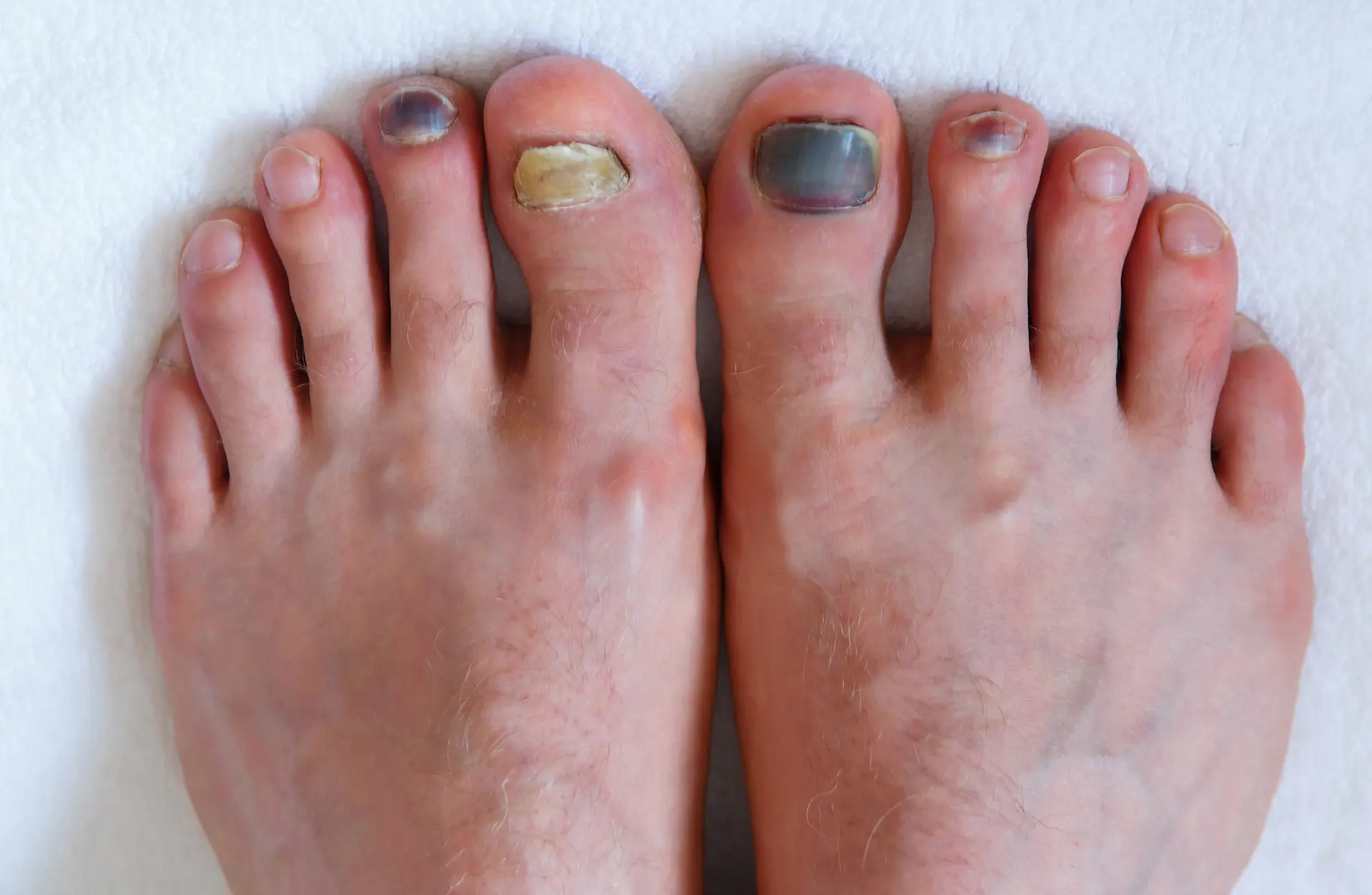
Preventing Toenail Fungal Infections
Good foot hygiene is key to preventing fungal toenail infections.
Keeping feet clean and dry, wearing shoes that allow airflow, and avoiding sharing personal care items are essential. In public areas like swimming pools and locker rooms, wearing shower shoes or flip-flops can help prevent the spread of fungal infections. Promptly treating athlete’s foot and keeping nails short can reduce the risk of toenail infection.
By taking these preventive measures, individuals can significantly lower their risk of developing fungal toenail infections and support healthy nail growth.

When to Seek Help for Your Fungal Toenail Infection
It is easy to dismiss a discoloured or thickened toenail as a cosmetic issue. However, ignoring a toenail fungal infection can lead to persistent discomfort, worsening symptoms, and, in some cases, secondary bacterial infections or complications for people with diabetes or compromised immune systems.
If you’ve noticed changes in your nail colour, texture or thickness, or if your nails have become painful or are separating from the nail bed, it’s time to consult a podiatrist. Early intervention dramatically improves treatment outcomes.
The Takeaway
Toenail fungal infections are frustrating, slow to resolve, and often misunderstood. With proper guidance, these pesky infections are manageable. At The Foot Practice, we combine evidence-based medicine with natural alternatives like Suanfix, powered with spirulina, to offer a complete solution for restoring nail health.
Whether you’re searching for a natural treatment for toenail fungal infection or simply want to know how to get rid of fungal infection in toenails for good, our expert podiatrists are here to help.
Book a consultation today and take the first step toward healthier, clearer nails, both naturally and effectively.

